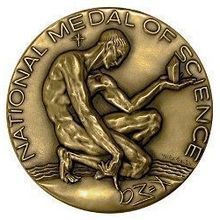Login
Subscribeecosystems

Environmental RNA Reveals Heat Stress in Water Fleas
Katherine Irving | Dec 2, 2022 | 5 min read
The eRNA detection method could one day be used to catch early warning signs of distress in wild ecosystems.

Arctic Greening Won’t Save the Climate—Here’s Why
Donatella Zona, The Conversation | Mar 30, 2022 | 4 min read
The growing season on the tundra is starting earlier as the planet warms, but the plants aren’t sequestering more carbon, a new study finds.

Invertebrate Density Influences Plant Flowering Times, Abundance
Catherine Offord | Feb 1, 2021 | 2 min read
An experimental study explores how plant communities may be affected by future declines in invertebrate populations.

Image of the Day: Bubbling Plants
Emily Makowski | Nov 18, 2019 | 1 min read
Plants use two different strategies to photosynthesize underwater.

Image of the Day: Pika Populations
Emily Makowski | Sep 24, 2019 | 1 min read
Geography plays a role in how the small mammals adapt to environmental changes.

An Invasive Midge Could Wreak Havoc on Antarctica
Carolyn Wilke | Dec 19, 2018 | 3 min read
The insects have already transformed parts of Signy Island in the South Atlantic Ocean and could drastically change Antarctic ecosystems if introduced by humans.

California’s Owls Being Exposed to Rat Poison
Catherine Offord | Jan 14, 2018 | 2 min read
Researchers suspect the source of the toxins may be some of the state’s 50,000 or so marijuana farms.

A Grisly Stork Buffet
The Scientist Staff | Aug 15, 2017 | 1 min read
Marabou storks on Kenya’s Mara River feast on the carcasses of migrating wildebeest that failed to make it across the waterway.

Life Springs Eternal
The Scientist Staff | Aug 15, 2017 | 1 min read
When scores of migrating wildebeest fail to survive a treacherous river crossing, their corpses fuel thriving ecosystems.

From Mass Death, Life
Steve Graff | Aug 15, 2017 | 5 min read
When thousands of animals die during mass migrations, ecosystems accommodate the corpses and new cycles are set in motion.

Evolution’s Quick Pace Affects Ecosystem Dynamics
Jef Akst | May 1, 2017 | 10+ min read
From fish harvests to cottonwood forests, organisms display evidence that species change can occur on timescales that can influence ecological processes.

Infographic: Watching Evolution in Real Time
Jef Akst | Apr 30, 2017 | 1 min read
Guppies transplanted between different communities in Trinidadian streams evolved in response to changes in predation threat in just a few generations.

Ocean Acidification Affects Fish Spawning
Alison F. Takemura | Jul 26, 2016 | 2 min read
Researchers report the first evidence that acidified waters alter the ocellated wrasse’s reproductive behavior in the wild.

Prominent Ecologist Dies
Catherine Offord | Jun 15, 2016 | 2 min read
Bob Paine, best known for introducing the idea of “keystone species,” has passed away at age 83.

Parallel Plagues
Sean B. Carroll | Apr 1, 2016 | 3 min read
Like cancer, ecological scourges result from the breakdown of regulatory processes, and may be treated with similar logic.

Life Scientists Receive National Medals
Karen Zusi | Dec 24, 2015 | 2 min read
The White House announces the recipients of this year’s US National Medals of Science and of Technology and Innovation.

Frog Nurseries
Jenny Rood | Feb 9, 2015 | 2 min read
Mimicking the rainforest water holes left by peccaries can help boost frog populations, a study suggests.

Subglacial Ecosystem
Jef Akst | Aug 22, 2014 | 2 min read
Samples from an Antarctic lake 800 meters below the ice reveal an abundance of microbial life.

Wild Relatives
Hannes Dempewolf, Nora P. Castañeda-Álvarez, and Colin K. Khoury | Jun 1, 2014 | 5 min read
As rich sources of genetic diversity, the progenitors and kin of today’s food crops hold great promise for improving production in agriculture’s challenging future.
